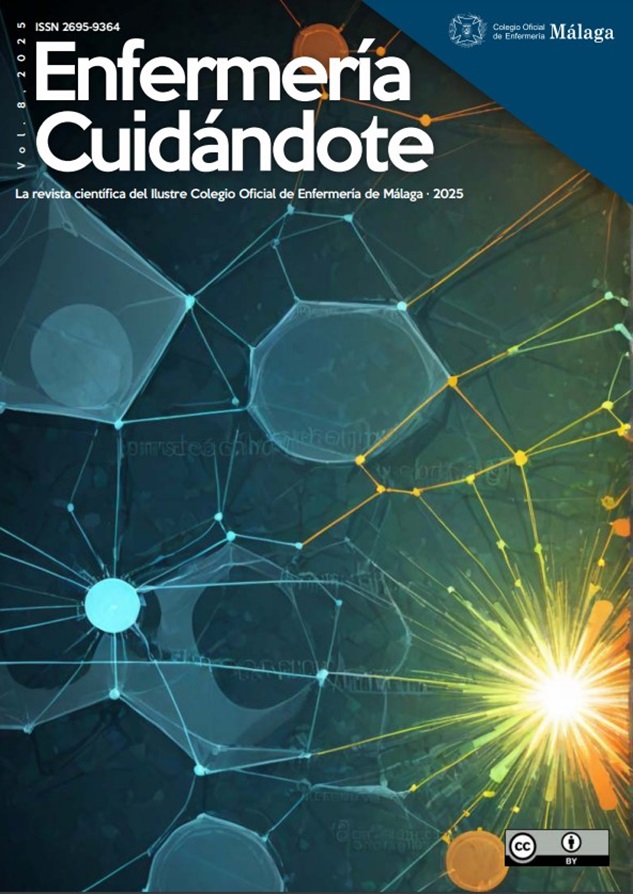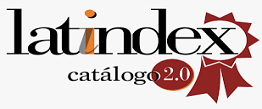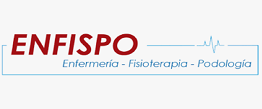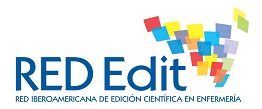The use of hydrotherapy in women during labour
DOI:
https://doi.org/10.51326/ec.8.2761430Keywords:
Birth, Hidrotherapy, Newborn, Pain, Pregnant, WaterAbstract
Introduction: Obstetric care has undergone a great evolution over many years. Therefore, as more women seek more natural and less invasive birth options, hydrotherapy is presented as a valuable alternative, promoting a more comfortable and empowering environment during one of the most significant moments of life.
Methods: A narrative bibliographic review was carried out using several databases including PubMed, Cochrane, Scielo and Web of Science. Likewise, articles were obtained through a reverse search. The search strategy was carried out by combining the descriptors “pregnancy”, “hydrotherapy”, “effects” and “effect pain”.
Results: In the search, 18 articles that met the inclusion criteria were selected. The results obtained indicate that hydrotherapy provides positive sensations allowing relaxation and good pain management. In addition, it provides postural changes and the woman's ability to control during childbirth. However, side effects include the risk of umbilical cord avulsión, as well as an increased risk of uterine infection without hospitalization.
Discussion: These findings suggest that the use of hydrotherapy is an alternative non-pharmacological analgesic method for childbirth due to the comfort provided, the ability to control and the early skin-to-skin contact among others. It is recommended that the pregnant woman has enough information about this alternative to determine for herself whether to use it.
Downloads
References
Organización Mundial de la Salud. Recomendaciones de la OMS: Cuidados durante el parto para una experiencia de parto positiva. Washington, D.C.: Organización Panamericana de la Salud; 2019. Disponible en: https://iris.paho.org/bitstream/handle/10665.2/51552/9789275321027_spa.pdf?sequence=1&isAllowed=y [Consultado 15-11-2023]
Ministerio de Sanidad, Consumo y Bienestar Social. Sanidad en datos - Número de nacimientos, defunciones y crecimiento vegetativo según comunidad autónoma (2022). Madrid: Ministerio de Sanidad, Consumo y Bienestar Social; [Fecha desconocida]. Disponible en: https://www.sanidad.gob.es/estadEstudios/sanidadDatos/tablas/tabla2.htm [Consultado 15-11-2023]
Instituto Nacional de Estadística. Movimiento Natural de la Población / Indicadores Demográficos Básicos. Año 2022. Madrid: Instituto Nacional de Estadística; 2023. Disponible en: https://www.ine.es/prensa/mnp_2022.pdf [Consultado 27-11-2023]
Grupo de trabajo de la Guía de Práctica Clínica sobre atención al parto normal. Guía de Práctica Clínica sobre la atención al parto normal. Vitoria-Gasteiz: Servicio Central de Publicaciones del Gobierno Vasco; 2010. Disponible en: https://www.sanidad.gob.es/areas/calidadAsistencial/estrategias/atencionPartoNormal/docs/guiaPracClinPartoCompleta.pdf [Consultado 15-11-2023]
American Academy of Pediatrics Committee on Fetus and Newborn; American College of Obstetricians and Gynecologists Committee on Obstetric Practice. Immersion in water during labor and delivery. Pediatrics. 2014;133(4):758-61. https://doi.org/10.1542/peds.2013-3794
Ministerio de Sanidad, Servicios Sociales e Igualdad. Informe sobre la atención al parto y nacimiento en el Sistema Nacional de Salud. Madrid: Ministerio de Sanidad, Servicios Sociales e Igualdad; 2012. Disponible en: https://www.sanidad.gob.es/organizacion/sns/planCalidadSNS/pdf/InformeFinalEAPN_revision8marzo2015.pdf [Consultado 15-11-2023]
Matas Rodríguez C, Fresno Serrano MA, Borrego Cabezas LB. Inmersión en agua caliente como método analgésico no farmacológico durante el trabajo de parto. Rev Sanit Invest. 2021;2(12):249. Disponible en: https://dialnet.unirioja.es/servlet/articulo?codigo=8277601 [Consultado 13-11-2023]
Cluett ER, Burns E, Cuthbert A. Immersion in water during labour and birth. Cochrane Database Syst Rev. 2018;5(5):CD000111. https://doi.org/10.1002/14651858.cd000111.pub4
Martín Orúe CM. Uso del agua en la atención al parto normal. NPunto. 2019;II(14). Disponible en: https://www.npunto.es/revista/14/uso-del-agua-en-la-atencion-al-parto-normal
Stone PW. Popping the (PICO) question in research and evidence-based practice. Appl Nurs Res. 2002;15(3):197-8. https://doi.org/10.1053/apnr.2002.34181
Cooper M, Warland J. What are the benefits? Are they concerned? Women's experiences of water immersion for labor and birth. Midwifery. 2019;79:102541. https://doi.org/10.1016/j.midw.2019.102541
Lewis L, Hauck YL, Crichton C, Barnes C, Poletti C, Overing H, et al. The perceptions and experiences of women who achieved and did not achieve a waterbirth. BMC Pregnancy Childbirth. 2018;18(1):23. https://doi.org/10.1186/s12884-017-1637-5
Barry PL, McMahon LE, Banks RA, Fergus AM, Murphy DJ. Prospective cohort study of water immersion for labour and birth compared with standard care in an Irish maternity setting. BMJ Open. 2020;10(12):e038080. https://doi.org/10.1136/bmjopen-2020-038080
Carlsson T, Ulfsdottir H. Waterbirth in low-risk pregnancy: An exploration of women's experiences. J Adv Nurs. 2020;76(5):1221-31. https://doi.org/10.1111/jan.14336
Ulfsdottir H, Saltvedt S, Georgsson S. Women's experiences of waterbirth compared with conventional uncomplicated births. Midwifery. 2019;79:102547. https://doi.org/10.1016/j.midw.2019.102547
Ertürk Aksakal S, Pay RE, Köse C, Özkan D, Engin Üstün Y. The Effect of Hydrotherapy Applied During the Active Phase of Labor on Postpartum Depression: A Case-Control Study. J Clin Obstet Gynecol. 2022;32(4):120-6. http://dx.doi.org/10.5336/jcog.2022-88397
Mallen-Perez L, Roé-Justiniano MT, Colomé Ochoa N, Ferre Colomat A, Palacio M, Terré-Rull C. Uso de hidroterapia durante el parto: evaluación del dolor, uso de analgesia y seguridad neonatal. Enferm Clin. 2018;28(5):309-15. https://doi.org/10.1016/j.enfcli.2017.10.004
Martínez-Galiano JM. Labour pain management with water immersion. West Indian Med J. 2018;67(1): 46–51. https://doi.org/10.7727/wimj.2015.407
Dias RA, de Faria Cardoso C, Ghimouz R, Nono DA, Silva JA Jr, Acuna J, et al. Quantitative cardiac autonomic outcomes of hydrotherapy in women during the first stage of labor. Front Med (Lausanne). 2023;9:987636. https://doi.org/10.3389/fmed.2022.987636
Cooper M, Warland J, McCutcheon H. Australian midwives views and experiences of practice and politics related to water immersion for labour and birth: A web based survey. Women Birth. 2018;31(3):184-93. https://doi.org/10.1016/j.wombi.2017.09.001
Bailey JM, Zielinski RE, Emeis CL, Kane Low L. A retrospective comparison of waterbirth outcomes in two United States hospital settings. Birth. 2020;47(1):98-104. https://doi.org/10.1111/birt.12473
Herrera Gómez A. La hidroterapia durante el parto. Cuidados de la Enfermería Obstétrica y sus resultados materno-infantiles. Conoc Enferm. 2021;41(11):22-30. https://doi.org/10.60108/ce.146
Lathrop A, Bonsack CF, Haas DM. Women's experiences with water birth: A matched groups prospective study. Birth. 2018;45(4):416-23. https://doi.org/10.1111/birt.12362
Ulfsdottir H, Saltvedt S, Georgsson S. Waterbirth in Sweden - a comparative study. Acta Obstet Gynecol Scand. 2018;97(3):341-8. https://doi.org/10.1111/aogs.13286
Sidebottom AC, Vacquier M, Simon K, Wunderlich W, Fontaine P, Dahlgren-Roemmich D, et al. Maternal and Neonatal Outcomes in Hospital-Based Deliveries With Water Immersion. Obstet Gynecol. 2020;136(4):707-15. https://doi.org/10.1097/aog.0000000000003956
Mellado-García E, Díaz-Rodríguez L, Cortés-Martín J, Sánchez-García JC, Piqueras-Sola B, Rodríguez-Blanque R. Safety and Effect of the Use of Hydrotherapy during Labour: A Retrospective Observational Study. J Clin Med. 2023;12(17):5617. https://doi.org/10.3390/jcm12175617
Bovbjerg ML, Cheyney M, Caughey AB. Maternal and neonatal outcomes following waterbirth: a cohort study of 17 530 waterbirths and 17 530 propensity score-matched land births. BJOG. 2022;129(6):950-8. https://doi.org/10.1111/1471-0528.17009
Neiman E, Austin E, Tan A, Anderson CM, Chipps E. Outcomes of Waterbirth in a US Hospital-Based Midwifery Practice: A Retrospective Cohort Study of Water Immersion During Labor and Birth. J Midwifery Womens Health. 2020;65(2):216-23. https://doi.org/10.1111/jmwh.13033
Sharpe EE, Rollins MD. Beyond the epidural: Alternatives to neuraxial labor analgesia. Best Pract Res Clin Anaesthesiol. 2022;36(1):37-51. https://doi.org/10.1016/j.bpa.2022.04.005
Hu Y, Lu H, Huang J, Zang Y. Efficacy and safety of non-pharmacological interventions for labour pain management: A systematic review and Bayesian network meta-analysis. J Clin Nurs. 2021;30(23-24):3398-3414. https://doi.org/10.1111/jocn.15865
Snapp C, Stapleton SR, Wright J, Niemczyk NA, Jolles D. The Experience of Land and Water Birth Within the American Association of Birth Centers Perinatal Data Registry, 2012-2017. J Perinat Neonatal Nurs. 2020;34(1):16-26. https://doi.org/10.1097/jpn.0000000000000450
Henrique AJ, Gabrielloni MC, Rodney P, Barbieri M. Non-pharmacological interventions during childbirth for pain relief, anxiety, and neuroendocrine stress parameters: A randomized controlled trial. Int J Nurs Pract. 2018;24(3):e12642. https://doi.org/10.1111/ijn.12642




















